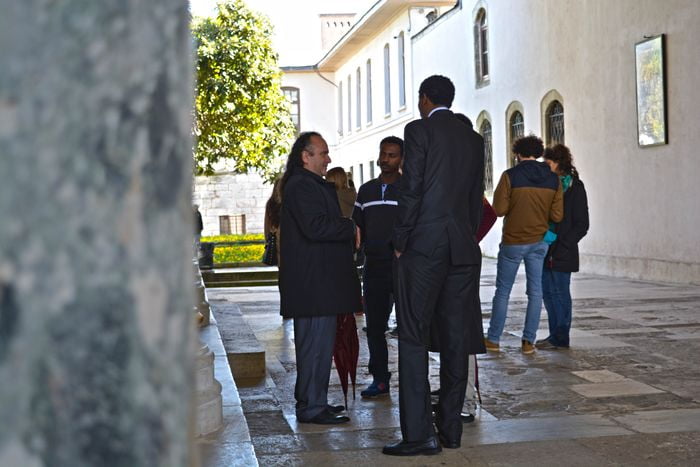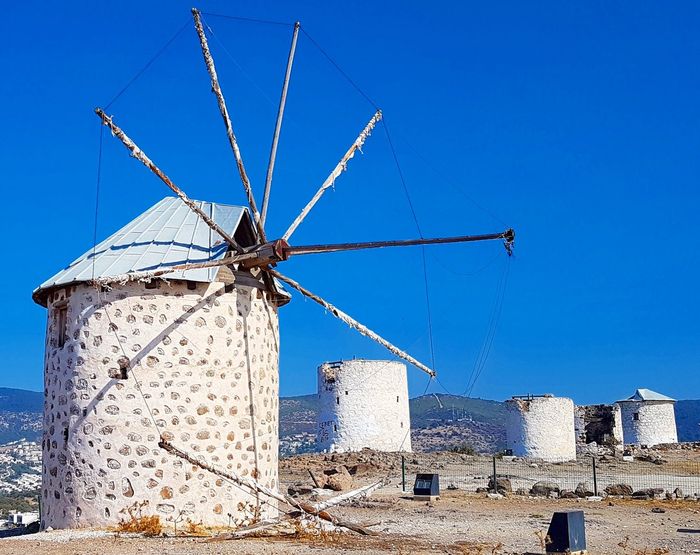For by so much more frequently as they are seen in artistic representation, by so much more readily are men lifted up to the memory of their prototypes, and to a longing after them; and to these should be given due salutation and honourable reverence (aspasmon kai timhtikhn proskunh-sin), not indeed that true worship of faith (latreian>) which pertains alone to the divine nature; but to these, as to the figure of the precious and life-giving Cross and to the Book of the Gospels and to the other holy objects, incense and lights may be offered according to ancient pious custom.
For the honour which is paid to the image passes on to that which the image represents, and he who reveres the image reveres in it the subject represented. For thus the teaching of our holy Fathers, that is the tradition of the Catholic Church, which from one end of the earth to the other hath received the Gospel, is strengthened.
Thus we follow Paul, who spake in Christ, and the whole divine Apostolic company and the holy Fathers, holding fast the traditions which we have received. So we sing prophetically the triumphal hymns of the Church, “Rejoice greatly, O daughter of Sion; Shout, O daughter of Jerusalem. Rejoice and be glad with all thy heart. The Lord hath taken away from thee the oppression of thy adversaries; thou art redeemed from the hand of thine enemies. The Lord is a King in the midst of thee; thou shalt not see evil any more, and peace be unto thee forever.”
Those, therefore who dare to think or teach otherwise, or as wicked heretics to spurn the traditions of the Church and to invent some novelty, or else to reject some of those things which the Church hath received (e.g., the Book of the Gospels, or the image of the cross, or the pictorial icons, or the holy reliques of a martyr), or evilly and sharply to devise anything subversive of the lawful traditions of the Catholic Church or to turn to common uses the sacred vessels or the venerable monasteries, if they be Bishops or Clerics, we command that they be deposed; if religious or laics, that they be cut off from communion.
[After all had signed, the acclamations began (col. 576).]
Celebrated in Trinity
The holy Synod cried out: So we all believe, we all are so minded, we all give our consent and have signed. This is the faith of the Apostles, this is the faith of the orthodox, this is the faith which hath made firm the whole world. Believing in one God, to be celebrated in Trinity, we salute the honourable images ! Those who do not so hold, let them be anathema. Those who do not thus think, let them be driven far away from the Church. For we follow the most ancient legislation of the Catholic Church. We keep the laws of the Fathers. We anathematize those who add anything to or take anything away from the Catholic Church. We anathematize the introduced novelty of the revilers of Christians.
We salute the venerable images. We place under anathema those who do not do this. Anathema to them who presume to apply to the venerable images the things said in Holy Scripture about. idols. Anathema to those who do not salute the holy and venerable images. Anathema to those who call the sacred images idols. Anathema to those who say that Christians resort to the sacred images as to gods. Anathema to those who say that any other delivered us from idols except Christ our God. Anathema to those who dare to say that at any time the Catholic Church received idols.
Many years to the Emperors, etc., etc.
Read More about Apologia of St John Damascene Against those who Decry Holy Images Part 33








